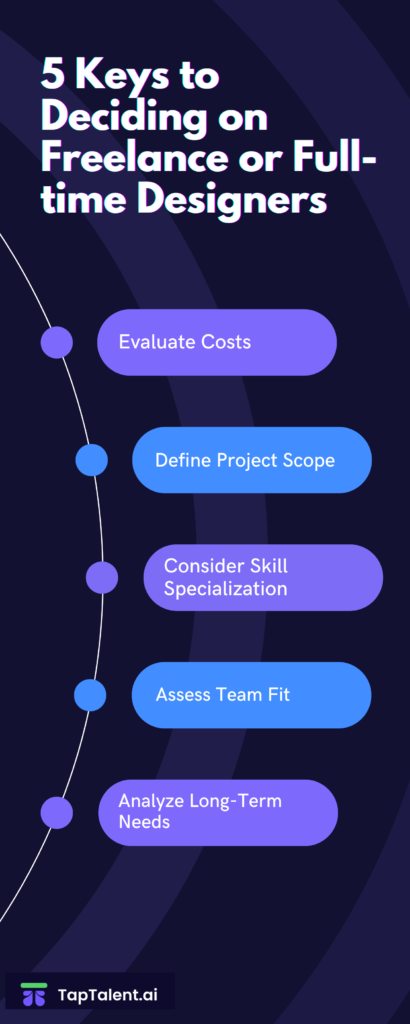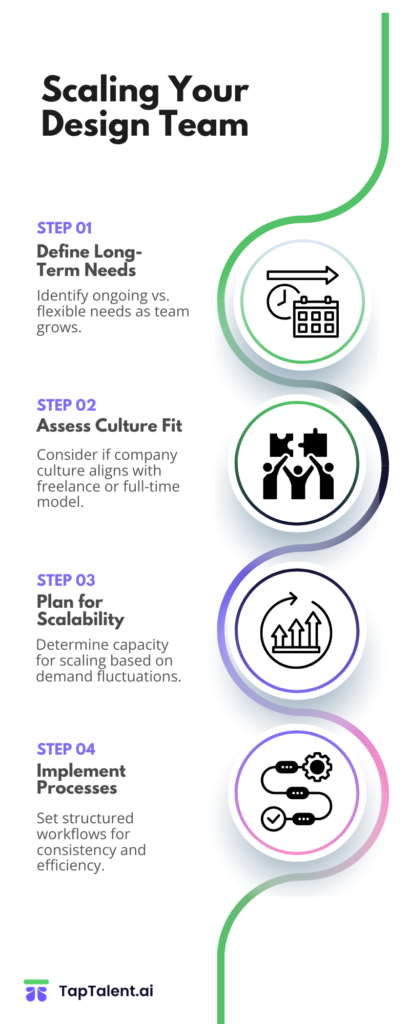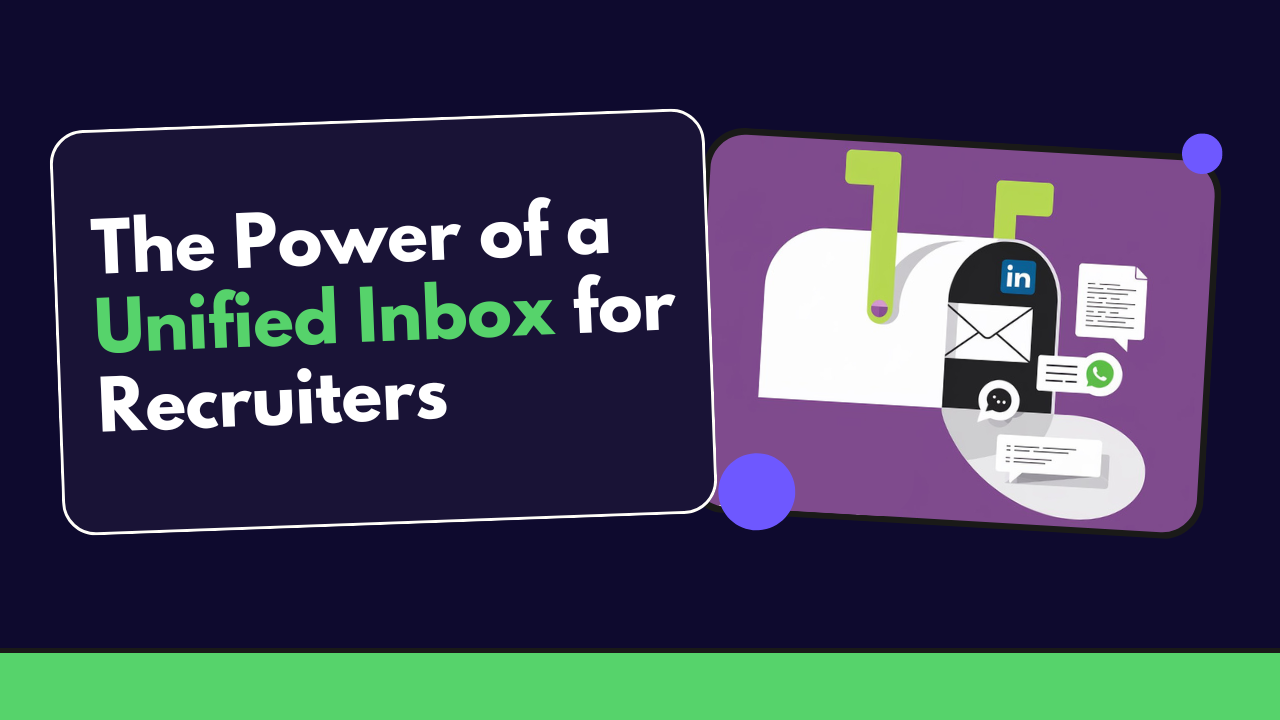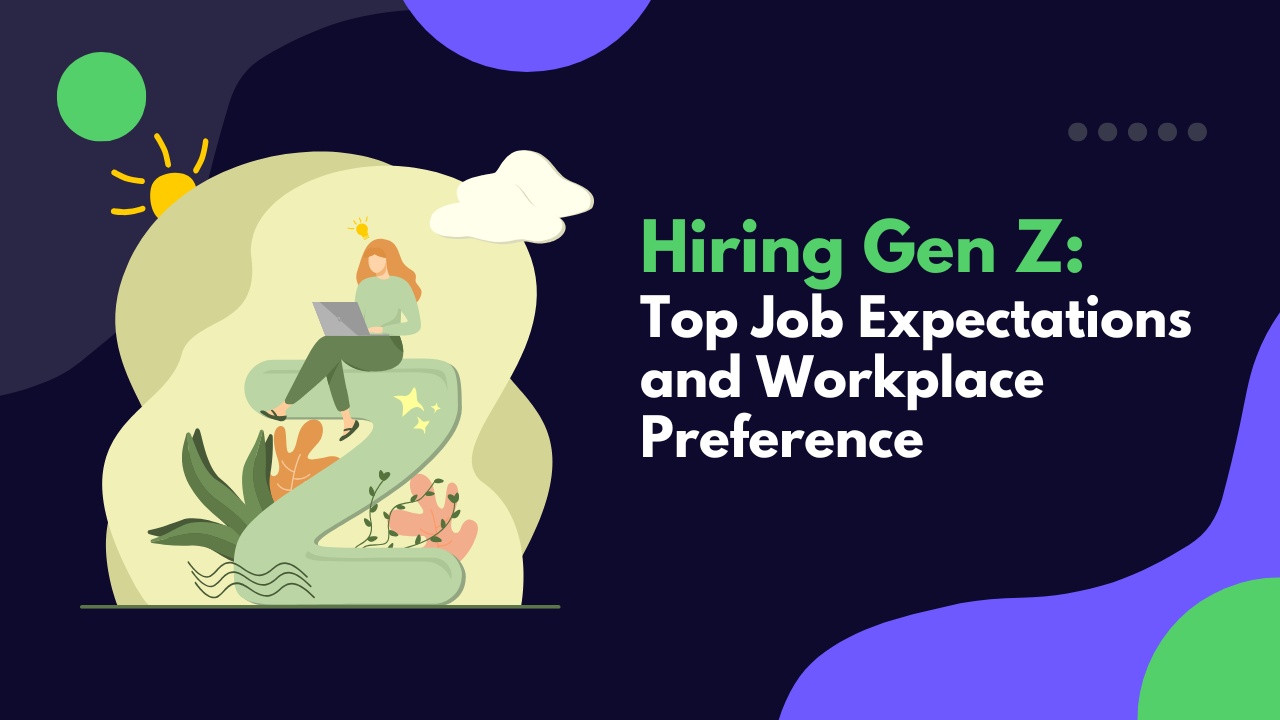In today’s rapidly evolving business landscape, the demand for innovative and high-quality design work continues to soar. But for business owners and managers, one critical decision often looms large: Should you invest in full-time designers or tap into the vast pool of freelancers? This dilemma is especially pertinent in a market where the freelance design sector is expanding rapidly, offering businesses more choices than ever before. Our blog, “Freelancers vs. Full-Time Designers: What’s Best for Your Business?” dives into this pressing question faced by many.
Throughout this post, we’ll embark on a comprehensive comparison of freelancers and full-time designers, focusing on key decision points such as cost-effectiveness, skillsets, management control, and scalability for future growth. We’ll explore essential aspects like financial implications, expertise matching, and project management efficiency, providing business professionals with clear insights to aid in their decision-making process. Whether you’re an HR professional, manager, or business owner, understanding these dynamics is crucial as you build or expand your design teams. Join us as we navigate this insightful analysis, guiding you towards the best choice tailored for your business needs.

Freelance vs. Full-Time: Matching Skills to Your Business Needs
Choosing between freelance designers and full-time hires hinges significantly on skillset and expertise. Freelancers typically excel in specialized skills due to their exposure to diverse projects, whereas full-time designers offer a more generalist approach that benefits cohesive team dynamics. Understanding these differences is crucial for aligning your business needs with the right talent.
First, let’s consider the specialized skills freelancers bring to the table. Freelancers often work across various industries and projects, honing expertise in specific areas like UI/UX design, brand identity, or motion graphics. This specificity allows businesses to tap into precise skills needed for particular projects without the commitment of a long-term hire. For example, if a business requires a unique 3D animation for a marketing campaign, hiring a freelancer with a niche in 3D design can provide the depth of expertise needed.
On the other hand, full-time designers typically exhibit a broader skill set which is advantageous for tasks requiring continuity and integrated teamwork. These designers can take on varied responsibilities, ranging from website maintenance to designing corporate collateral, ensuring versatility and internal knowledge retention.
Moreover, when it comes to generalist versus specialist roles, it is crucial to determine what your projects demand:
-
Generalist Roles:
-
Ideal for long-term tasks that require adaptability and ongoing involvement.
-
Offer the advantage of becoming deeply embedded in the company culture, leading to designs that reflect brand ethos effectively.
-
-
Specialized Roles:
-
Perfect for targeted projects requiring specific skills.
-
Provide innovative solutions and fresh perspectives, often invigorating projects with new ideas and techniques.
-
Access to a diverse talent pool is another compelling argument for opting for freelancers. Through platforms such as Upwork or Fiverr, businesses can swiftly connect with international talent, enabling diverse perspectives that may be missing in localized, full-time teams. This diversity is not only cultural but also extends to creativity and problem-solving approaches. For instance, a tech startup looking to penetrate a foreign market might benefit from a designer who is familiar with that region’s trends and consumer behaviors.
Importantly, although freelancers bring fresh perspectives, managing their integration into a project requires adept handling. Businesses must communicate clear objectives and foster a collaborative virtual environment. This integration, while sometimes challenging, can result in a beautifully innovative infusion of talent into existing team structures.
As we transition to examining control and management aspects, it’s essential to appreciate how skillsets and expertise contribute significantly to organisational outcomes. Whether it’s looking for immediate results from a specialized freelancer or relying on the steady, versatile hand of a full-time designer, matching these talents to business needs forms the backbone of effective design strategy. Up next, we delve into control and management dynamics, drawing comparisons on oversight, communication, and deadline management between freelancers and full-time hires.

Managing Your Design Team: Freelancers vs. Full-Time Control
After examining how skillsets can align with your business needs, the next step is maintaining project efficiency through effective control and management of your design team. Both freelance and full-time designers offer distinct management dynamics, and a strategic approach to oversight can maximize their contributions.
Project Oversight: Striking the Right Balance
Managing full-time employees often allows for more hands-on oversight due to their continuous presence in the company. This visibility facilitates an easier alignment with the project’s direction and swift adaptation to changes. On the other hand, freelancers operate more independently. While this independence can foster innovation, it might present challenges in maintaining consistent project updates and ensuring alignment with company standards.
An example to consider is a tech startup that required consistent brand visuals. With full-time designers, the company easily maintained a cohesive brand image through daily check-ins. In contrast, when utilizing freelancers for short-term projects like a promotional video campaign, they resorted to scheduled weekly updates to keep all stakeholders informed and on the same page.
Communication Strategies: Ensuring Clear Channels
Effective communication is the linchpin for managing any design team, whether in-house or remote. Full-time teams benefit from proximity, fostering spontaneous interactions that can quickly resolve minor queries. However, the modern workplace is increasingly leaning towards remote communications even for full-time teams. Leveraging digital tools like Slack or Microsoft Teams can bridge the gap for remote freelancers, ensuring seamless communication.
It’s crucial, especially with freelancers, to set explicit expectations and milestones from the outset. Clear communication protocols help prevent misunderstandings and ensure timely project delivery. Implementing regular virtual meetings or check-ins can foster a collaborative environment, allowing freelancers to contribute effectively without physical presence.
Managing Deadlines and Expectations
One frequent concern businesses face with freelancers is deadline management. Unlike full-time employees constrained by a regular schedule, freelancers may juggle multiple projects. Utilizing project management tools like Asana or Trello can streamline task assignments and progress tracking. These tools offer transparency, making it easier to adjust timelines proactively if needed.
For instance, a marketing agency found success using Asana to manage its blend of freelancers and full-time designers. By setting clear deadlines and project phases, both groups understood their roles and responsibilities, minimizing delays and confusion.
The Agile Metaphor: A Flexible Approach to Management
Think of managing freelancers and full-time designers like leading an orchestra. Your full-time team provides the consistent, steady rhythm of a classical orchestra, while freelancers add the sparkling solos that can elevate a performance to brilliance. To achieve harmony, you, as the conductor, must adapt your management style to the specific composition — sometimes requiring strict control, while at other times allowing freedom for creativity.
Addressing Potential Concerns
Readers might wonder about the reliability of freelancers with critical projects. The key here is drafting precise contracts that outline deliverables, timelines, and quality standards. Always vet freelancers thoroughly through platforms that provide ratings and reviews, ensuring their reliability before entrusting them with sensitive tasks.
Balancing control and management within your design team is an art. Understanding the dynamics between freelancers and full-time designers helps businesses tailor their management strategies for optimum efficiency. As we move forward, the focus will shift to evaluating how these decisions impact long-term growth and scalability, ensuring your team is equipped to meet future challenges.

Scaling Your Design Team: The Long-Term View of Freelance vs. Full-Time
As businesses navigate the complex landscape of hiring designers, one question often arises: How do freelancers and full-time designers impact long-term growth and scalability? Understanding this can be likened to planning a long-term journey where flexibility, cohesion, and cultural alignment play pivotal roles.
Team Cohesion and Cultural Integration
Full-time designers often act as the glue that reinforces team cohesion and company culture. Their sustained presence enables them to internalize company values and ethos, making their design output a true reflection of the brand’s identity. Think of them as the steady backbone of your design orchestra, harmonizing with the brand’s ongoing narrative.
However, while freelancers bring fresh creativity and new perspectives, their transient involvement can sometimes hinder seamless integration into the company’s cultural framework. Freelancers are like guest soloists in a symphony, adding remarkable flair but not always adhering to the ensemble’s deeper rhythms.
Strategies for Fostering Cohesion:
-
Mentorship Programs: Pair freelancers with full-time mentors to bridge cultural gaps.
-
Regular Feedback Loops: Incorporate consistent feedback sessions involving both full-time and freelance designers to align objectives.
-
Onboarding Sessions: Include freelancers in company-wide initiatives and events where feasible to nurture a sense of belonging.
Company Culture Fit and Freelance Flexibility
Cultural fit plays a critical role in how seamlessly a designer integrates and contributes. Full-time employees have the advantage of long-term alignment with company culture, which can lead to stronger team synergies and continuity in design ethos.
While freelancers may not need to blend as deeply into company culture, they offer unparalleled flexibility, allowing businesses to scale their design capacity based on fluctuating needs. This agility is particularly advantageous for project-based work or seasonal surges in demand, facilitating a swift response without long-term commitments.
Advantages of Flexibility:
-
Cost-Efficiency: Scale up or down easily based on project requirements without the entanglement of permanent salaries or benefits.
-
Diversity of Ideas: Infuse fresh, diverse perspectives that can invigorate creative processes and problem-solving approaches.
For example, a retail giant might ramp up its design team with freelancers during peak sales seasons, ensuring cutting-edge promotional designs while maintaining a lean full-time staff during off-peak times.
Scaling Design Capacity for Growth and Innovation
The ability to scale design teams efficiently is crucial for ongoing business growth and responsiveness to market changes. Full-time teams provide stability for sustained growth whereas freelancers offer variable scalability options to meet immediate project needs.
Effective Scalability Strategies:
-
Hybrid Approach: Combine a core full-time team with a pool of vetted freelancers that can be engaged as necessary.
-
Utilization of Digital Platforms: Leverage platforms like Upwork or Fiverr to access a broad spectrum of global freelance talent quickly.
-
Planning Forecasts: Conduct regular project forecasts to anticipate design needs and adjust team size accordingly.
Addressing Common Concerns
A common concern when scaling with freelancers is ensuring consistent quality and reliability. The key is to establish a robust vetting process and draft clear contracts that define deliverables, timelines, and standards. Leveraging trusted freelancer platforms that offer ratings and reviews can significantly mitigate these risks.
Transition to Conclusion
Ultimately, the decision between freelancers and full-time designers involves considerations of company culture, the need for flexibility, and long-term strategic goals. In the concluding section, we will summarize these insights and offer practical guidance for choosing the best structure for your business design team.
Real-World Examples: How Businesses Leverage Freelance and Full-Time Designers
To wrap up our exploration of how best to integrate designers into your business strategy, we turn to real-world examples that highlight successes and challenges with freelancers and full-time designers. These cases offer valuable insights and affirm the importance of tailoring approaches based on specific organizational needs.
Case Study 1: Augmenting with Freelancers
Take the case of a tech startup experiencing rapid growth and requiring quick scalability in its design department. Initially, the business relied solely on a small team of full-time designers. However, during a significant product launch, the demand for comprehensive UI/UX design work surged. To meet this spike, the startup enlisted freelance specialists through platforms like Upwork, quickly filling the skill gap with experts in mobile UI design. This strategy allowed them to maintain high-quality outputs without permanent overhead costs.
-
Lesson Learned: Freelancers offer the flexibility to scale and access specialized skills promptly, particularly useful during peak demand or for niche expertise needs.
Case Study 2: Success with Full-Time Designers
In contrast, consider a multinational corporation with a robust brand identity that hinged on consistent messaging across a multitude of platforms. This company, prioritizing cohesion and brand consistency, decided to invest in a full-time design team. This strategic decision ensured that the team was deeply embedded in the company’s culture, aligning their work closely with long-term brand strategies. Full-time employees participated in regular internal workshops, reinforcing their integration and understanding of the company’s evolving goals.
-
Lesson Learned: Full-time designers foster team cohesion and cultural fit, which are essential for creating a unified brand image and maintaining consistent project momentum.
As we synthesize these insights, it’s clear that the decision between freelancers and full-time designers isn’t a one-size-fits-all strategy. It requires a nuanced understanding of your business’s immediate needs and long-term objectives.
Key Takeaways:
-
Flexibility vs. Cohesion: Freelancers bring short-term adaptability and specialized skills, whereas full-time designers offer long-term stability and integration.
-
Cost Considerations: Freelancers provide cost-effective solutions for specific projects, yet full-time employees may offer better value for continuous design needs.
-
Cultural Fit and Integration: Full-time roles ensure stronger cultural alignment, whereas freelancers contribute innovative perspectives with less emphasis on cultural integration.
-
Scalability: Businesses can optimize performance and resource allocation by combining both freelancers and full-time teams, tailoring this blend based on project demands.
Conclusion
In conclusion, the decision to hire freelancers or full-time designers will largely depend on your organization’s specific circumstances—such as budget, project needs, and strategic goals. Businesses are encouraged to weigh these factors carefully, considering both the immediate benefits and long-term impact on growth and scalability. Ultimately, whether through a mixed model for agility or a committed full-time team for cohesion, building a design team that aligns with your business strategy remains crucial.
Before embarking on this journey, consider conducting a thorough assessment of your organizational needs. A decision grounded in both the current landscape and future projections will ensure a successful integration of talent, creative collaboration, and sustained innovation.




